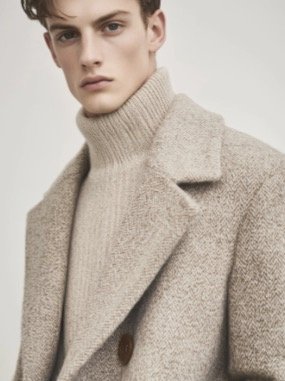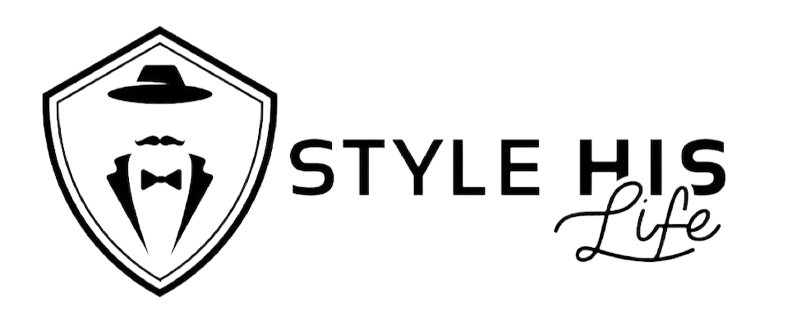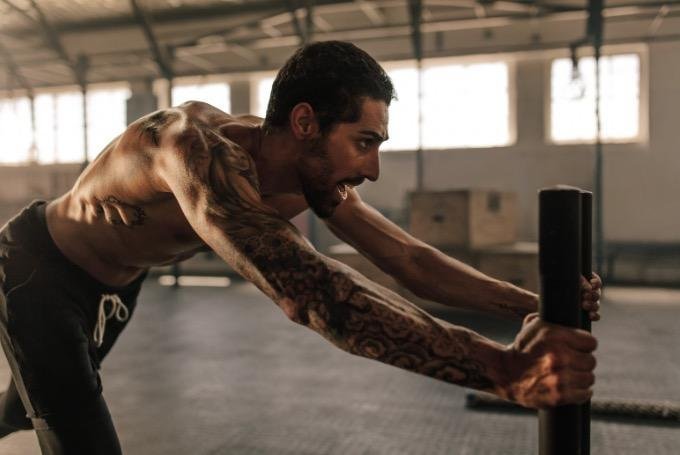Between $1,000 designer parkas and $400 cashmere sweaters flooding your social feeds, most winter fashion advice reads like it’s written for guys with unlimited budgets.
But here’s the reality – you can absolutely nail your winter-style game without decimating your savings account. I’ve spent years testing different brands, stalking sales, and finding those perfect sweet spots where quality meets affordability.
Today, I’m breaking down everything you need to know about building a winter wardrobe that’ll keep you warm, looking sharp, and decidedly not broke.
The Smart Guy’s Guide to Winter Shopping
Here’s something the fashion magazines won’t tell you: winter clothes have seasons, just like produce. Understanding this timing is crucial for building a quality wardrobe without emptying your wallet.
The best winter pieces typically hit stores in late September, but unless you’re eyeing something that might sell out, hold off on buying. The first major price drops usually happen right after Thanksgiving, with the deepest discounts coming in late January and February.
But timing isn’t everything – knowing where to shop matters just as much as knowing when. ASOS has become a goldmine for outerwear, particularly their wool-blend coats and puffer jackets.
Their regular sales combined with a constant rotation of new styles means you can usually snag premium-looking pieces for about 40% less than department store prices.

Express might not be the first store that comes to mind for winter wear, but they’ve seriously stepped up their game in recent years.
Their merino-blend sweaters and sherpa-lined bombers offer remarkable quality for the price, especially during their frequent 40% off sales. Pro tip: sign up for their emails – they often send out “flash sale” alerts that can save you serious cash on winter essentials.
For basics and layering pieces, don’t sleep on Zara. While their ultra-trendy pieces might not be worth the investment, their knitwear and basic outerwear often rival much more expensive brands in both quality and style.
The key is focusing on their simpler designs – think solid-colored sweaters, classic-cut coats, and basic layering pieces rather than anything too fashion-forward.
Stylish and Warm: The Art of Winter Outerwear
Let’s tackle the biggest investment first – your coat collection. While you might be tempted to grab that trendy puffer jacket you’ve been eyeing, smart winter dressing starts with understanding what you actually need.
The secret isn’t loading up on-trend pieces – it’s building a foundation of versatile outerwear that can handle everything from casual weekends to client meetings.
The backbone of any solid winter wardrobe starts with what I call the “power trio” of winter coats.
Wool Coat
First up is a well-fitted wool coat, ideally in charcoal or navy. This is your heavy hitter for anything business-related or nights out. ASOS consistently delivers on this front with wool-blend overcoats that look significantly more expensive than their typical $75-200 price point.
Their current ASOS DESIGN Brushed Wool Look Overcoat in Stone option offers the same sharp silhouette as designer versions but at a fraction of the cost.

ASOS Design Brushed Wool Look Overcoat
Puffer Jacket
For those brutal winter days when temperatures really plummet, you’ll need a serious puffer jacket. But forget dropping a month’s rent on premium brands – Zara’s recent Feather Fill Puffer Jacket offerings rival their high-end counterparts in both warmth and style.
Look for designs with a higher neck collar; this seemingly small detail can eliminate the need for a scarf on milder days. Their latest down-alternative puffer, priced around $90, offers impressive warmth without the premium markup.

ZARA 100% FEATHER FILL PUFFER JACKET
Bomber Jacket
Rounding out your outerwear arsenal should be a bomber jacket – your go-to for those tricky transition temperatures. Express has been killing it lately with their different versions of their Bomber Jackets, bridging the gap between style and function.

The beauty of a well-chosen bomber is its versatility – it works equally well over a hoodie for weekend coffee runs or layered over a sweater for casual Fridays at the office.
The Layer Game: Mastering Winter Warmth
Here’s where most guys go wrong – they’ll drop serious cash on outerwear but completely overlook what goes underneath.
Your layering strategy is actually more crucial for staying warm than that expensive coat. Think about it – you can always take layers off, but once you’re down to just a coat, you’re stuck with whatever warmth it provides.
Let’s start with base layers. Merino wool is undoubtedly the gold standard, offering incredible warmth without bulk while naturally fighting odors. But contrary to what luxury brands would have you believe, you don’t need to spend a fortune here.
Coofandy, which sells mainly, has quietly been producing some seriously impressive Quarter-Zip Merino Sweaters for under $30 but in styles that look like they cost three times that. They’re not 100% merino, but the synthetic blend actually makes them more durable and easier to care for.

COOFANDY MEN’S QUARTER ZIP-UP SWEATERS
Moving up to mid-layers, this is where your everyday winter style really comes together. A well-chosen collection of sweaters, particularly chunky knits, and turtlenecks, will do more for your winter look than any designer coat.
Zara’s ribbed turtlenecks have become a personal favorite, offering a perfectly slim fit that layers beautifully under everything from blazers to bomber jackets. Their price point (usually around $70) lets you grab a few colors without guilt.

Would you like me to continue with the next sections? I can expand on business casual combinations, weekend wear, and smart shopping strategies while maintaining this more thorough, conversational approach.
Elevating Your Winter Style: From Office to Weekend
The real secret to looking put together during winter isn’t about having the most expensive pieces – it’s about understanding how to combine what you have.
Think of your winter wardrobe like a chess game: each piece has its own moves, but the magic happens when you know how to coordinate them effectively.
For the office, the winning combination starts with a well-fitted Wool Overcoat. Layer a Turtleneck underneath – Zara’s ribbed versions hit that sweet spot between comfort and polish – and anchor it with tailored chinos or wool trousers.

The result is a look that means business without screaming, “trying too hard.” On days when you need to dial it up, swap the turtleneck for a dress shirt and add a blazer between layers.
The key here is choosing pieces in complementary tones rather than matching exactly. A charcoal overcoat, navy blazer, and light blue dress shirt create depth without looking cluttered.
Weekend style during winter is where you can really have some fun with layering. Start with a thermal base layer – the Coolfandy Quarter-Zip we talked about earlier is perfect here. Top it with that Sherpa bomber we discussed.
Pair this with straight-leg denim in a dark wash, and you’ve got an outfit that works anywhere from coffee runs to casual dates.
The Art of Winter Accessories
Winter accessories aren’t just about staying warm – they’re the finishing touches that can elevate your entire look. A quality scarf isn’t just functional; it adds visual interest to even the simplest outfits.
Look for merino wool blends rather than pure cashmere – they’re more durable and usually much more affordable. ASOS and Zara both offer excellent options that look far more expensive than their price tags suggest.

When it comes to winter headwear, a chunky knit beanie is your best friend. But here’s the thing – those $100+ designer versions aren’t necessarily any warmer or better-looking than mid-range options.
Uniqlo’s heat tech beanies, usually priced around $20, offer remarkable warmth and style for a fraction of the cost. The key is choosing neutral colors that work with everything – think charcoal, navy, or forest green rather than bright patterns or logos.
Would you like me to continue with the final sections about maintenance, care tips, and specific outfit combinations? I’ll maintain this detailed, conversational approach while incorporating our keywords naturally.
Building Your Winter Wardrobe: A Strategic Approach
Rather than rushing out to buy everything at once, think of building your winter wardrobe as a strategic process. Start with your most crucial pieces – typically a warm coat and reliable boots – and build from there.
This approach not only spreads out the cost but also lets you see how new pieces work with what you already own.

When choosing colors, think in terms of a cohesive palette rather than matching sets. Navy, charcoal, and deep olive create a versatile foundation that works in practically any combination.
Add burgundy or forest green for visual interest without limiting your mixing and matching options. This isn’t just about looking good – a coordinated wardrobe means each piece works harder for you, reducing the total number of items you need to buy.
The Bottom Line: Quality Where It Counts
At the end of the day, building a winter wardrobe is about making smart choices with your resources. Spend more on the pieces that take the most abuse – your main coat, everyday boots, and the sweaters you’ll wear constantly.
Save on items that either don’t show much (base layers) or that you’ll only wear occasionally (super-trendy pieces or special occasion wear).
Remember, good style isn’t about having the most expensive version of everything. It’s about understanding what works for your life, your budget, and your personal taste.

The best winter wardrobe is one that keeps you warm, makes you feel confident, and doesn’t stress your wallet. By focusing on versatile pieces, understanding proper care, and shopping strategically, you can build a winter wardrobe that looks expensive without the luxury price tag.
Whether you’re just starting to build your winter wardrobe or looking to upgrade what you have, remember that this is a marathon, not a sprint.
Take your time, invest wisely, and focus on pieces that will serve you well for years to come. After all, true style isn’t about following every trend – it’s about finding what works for you and wearing it with confidence, no matter what the weather brings.
FAQ: Men’s Winter Fashion on a Budget
I live in a really cold climate. What’s the most effective way to layer without looking bulky?
The key to staying warm without the bulk is smart layering with the right materials. Start with a merino wool or thermal base layer, add a lightweight fleece or quarter-zip pullover, and top with your winter coat.
The middle layer should be fitted but not tight – this prevents bunching while trapping warm air effectively. For extreme cold, focus on high-density rather than high-volume materials.
Are winter boots really necessary if I’m mostly going from my car to the office?
Even for short outdoor exposure, waterproof winter boots are essential. They protect your dress shoes from salt damage and prevent unexpected slips.
Look for versatile options like waterproof Chelsea boots or moc toe boots that work with both casual and business attire. Many modern winter boots are designed to look chic while providing necessary protection.
How can I make my winter wardrobe more sustainable without sacrificing style?
Focus on reducing your carbon footprint by investing in versatile winter pieces that last longer. Choose natural materials like wool and organic cotton, and look for brands that use recycled materials in their winter jackets and fleece jackets.
A well-chosen capsule wardrobe of high-quality basics (like a good overcoat, merino sweaters, and heavy-duty denim) can be mixed and matched for years.
I work in a casual office. How do I stay warm while looking professional?
Layer smart-casual pieces like a quarter-zip pullover or casual shirt over a long-sleeve base layer. A shearling or wool-lined bomber jacket can replace traditional blazers on colder days.
For bottoms, dark denim or wool trousers work well with both dress shoes and winter boots. Consider adding a turtleneck – it’s both warm and professional-looking.
What winter accessories give the most bang for my buck?
Invest in quality wool socks and a good beanie first – they make a huge difference in how warm you feel. A versatile scarf in a neutral color can work with everything from casual hoodies to dress coats.
For added warmth without bulk, thermal socks and thin gloves with touch device compatibility are worth considering.
How do I keep my winter clothes looking good season after season?
Regular maintenance is key. Invest in a good fabric brush for wool coats, use water-repellent spray on suede and leather items, and always let wet boots dry naturally (not near direct heat).
For sweaters and knits, hand wash or use a delicate cycle and lay flat to dry. Store coats on proper hangers to maintain shape.
I’m into athleisure. How can I make it work for winter?
Layer performance fabrics strategically. Start with thermal base layers, add a crewneck sweatshirt or hooded pullover, and top with a quilted jacket or parka.
Look for winter-specific athletic wear with added warmth features. Technical fabrics can look stylish while providing excellent insulation.
What are some winter fashion mistakes I should avoid?
Common pitfalls include:
- Choosing skinny jeans for winter (they leave no room for warm layers)
- Ignoring sock quality (cheap socks can ruin the comfort of expensive boots)
- Over-relying on a single heavy coat instead of strategic layering
- Forgetting about fabric care (salt stains and improper storage can ruin winter clothes)
- Prioritizing trends over functionality (some trendy pieces offer little protection against cold)
How can I transition my fall wardrobe into winter without buying all new clothes?
Start by winterizing your fall pieces. Add thermal undershirts to your casual shirts and flannels, layer a plaid overshirt under your denim jacket, and incorporate warm accessories like wool socks and beanies. Focus on choosing the right base layers – they can make your existing clothes much warmer.
What should I splurge on vs. save on for winter clothes?
Splurge on:
- A quality winter coat (overcoat or parka, depending on your climate)
- Waterproof winter boots
- Base layer pieces (especially merino wool items)
Save on:
- Trend-focused pieces
- Most accessories (except gloves)
- Casual items like hoodies and sweatshirts
Bonus Tip: If you’re looking to get in shape and boost your confidence, check out our workout guides!









